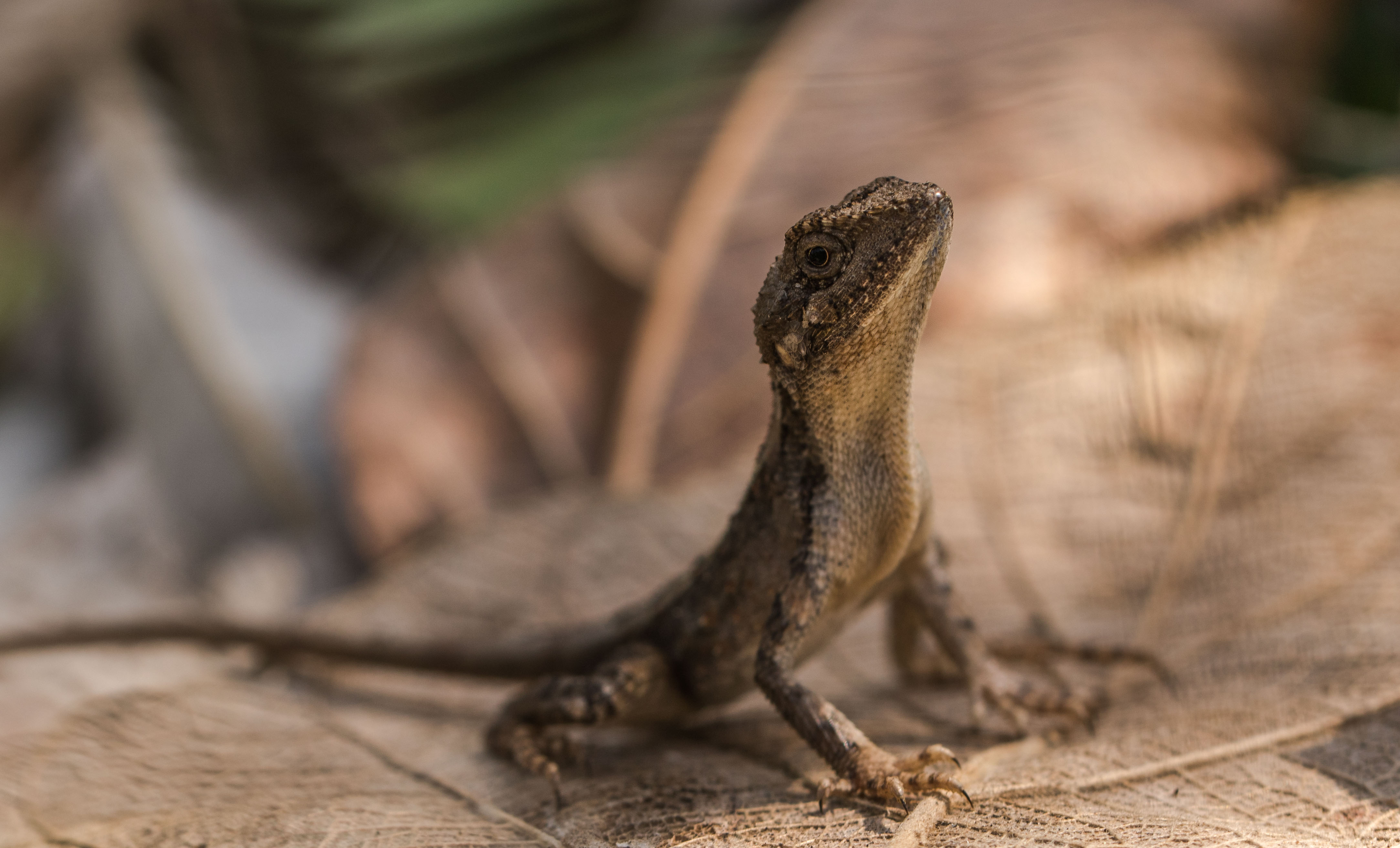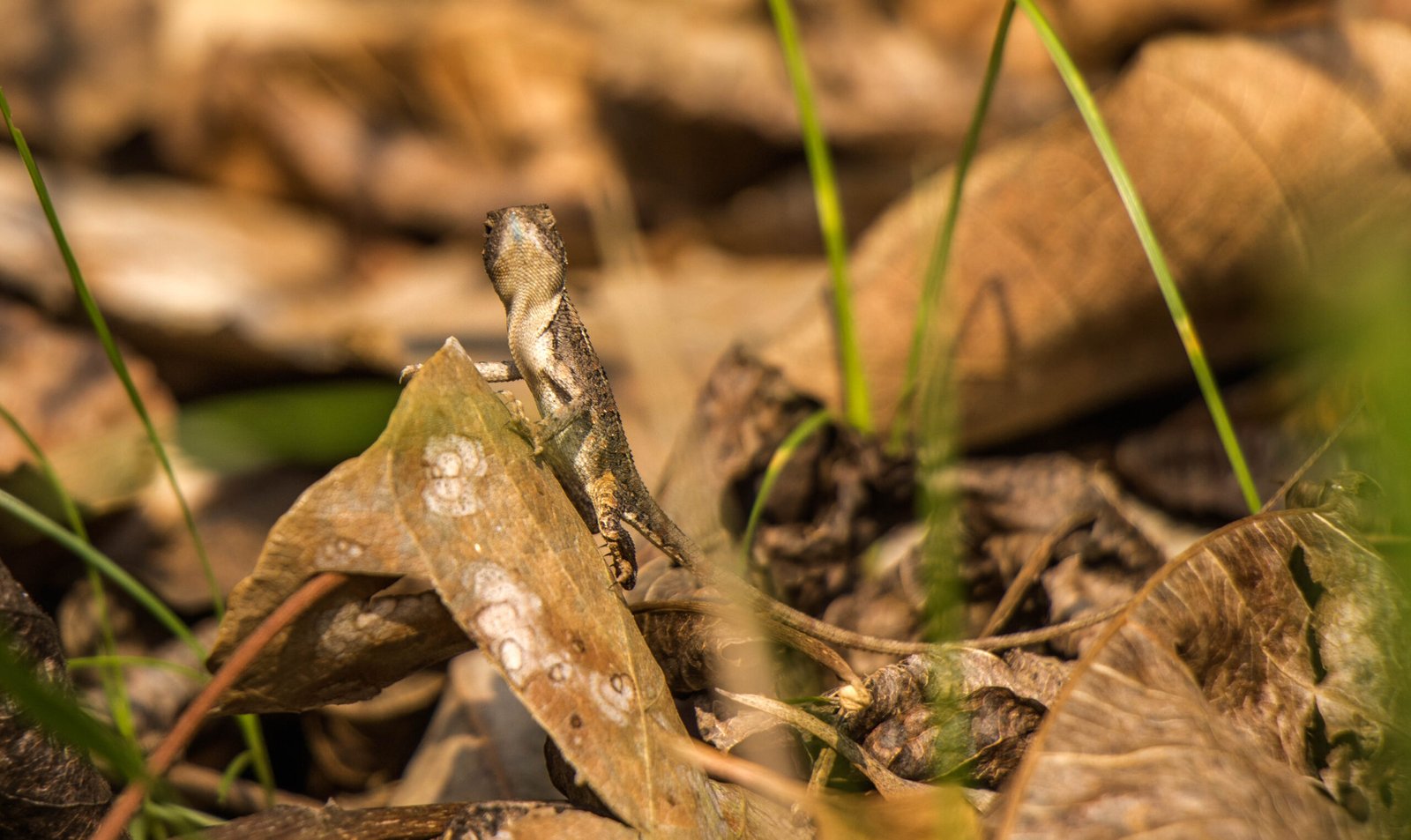Walking around in the morning to see the amazing wildlife that abodes within the Singinawa Jungle Lodge premises is the norm these days. When I start a walk, I always have some expectations. Usually, these include some birds and butterflies.
On one particular morning recently, I had similar expectations in my mind; and I was not disappointed. Several beautiful birds and butterflies made their appearances and I was able to even photograph some of them. All of a sudden, I saw something scurry across the path I was walking on.


I immediately realised that it was a lizard, but was not able to recognise which one, as the lizard disappeared into the leaf litter next to the pathway. The grounds of Singinawa are home to some fantastic lizards, including beautiful bent-toed geckos, mysterious agamas and the rarely-encountered fan-throated lizards. Expecting the lizard to be one of these, I began to investigate the immediate surroundings, hoping to find the lizard. The lizard was quite well camouflaged in the leaf litter, and had plenty of places to hide. So it took me some time to find it. To my thrill and surprise, it turned out to be a young fan-throated lizard!
Fan-throated lizards are named so because of the presence of a fan-shaped patch of skin (called dewlap) on the neck of the males. This patch of skin is not usually visible, but during the breeding seasons, males use this as a visual signal to attract females and warn rival males. Some species of fan-throated lizards have brilliantly-coloured dewlaps. But the one present in Kanha has a dewlap mostly lacking any bright colours, except for a small blue line running down from its chin.

As it is rare to find this lizard in the Singinawa premises (the last time I had seen one was in the summer of 2017), I called my fellow naturalists to have a look. The lizard became comfortable with our presence in a short while, and was soon moving on the forest floor looking for food in the form small insects. It took the lizard long to catch anything, but it eventually ended up catching a juicy, decent-sized, green-coloured cricket. It very carefully muted down the cricket, avoiding its spiny hind legs.


By this time, I had spent close to an hour with the amazing lizard, and decided to leave it and continue on my walk. But now I had no expectations in my mind, as the unexpected fan-throated lizard has made my day.

Sachin Sharma
Naturalist, Singinawa Jungle Lodge


